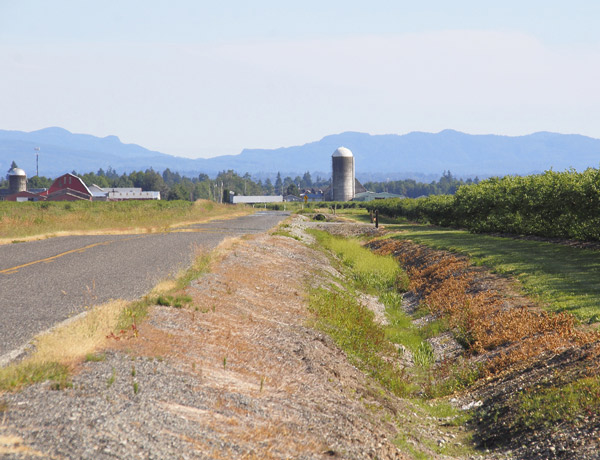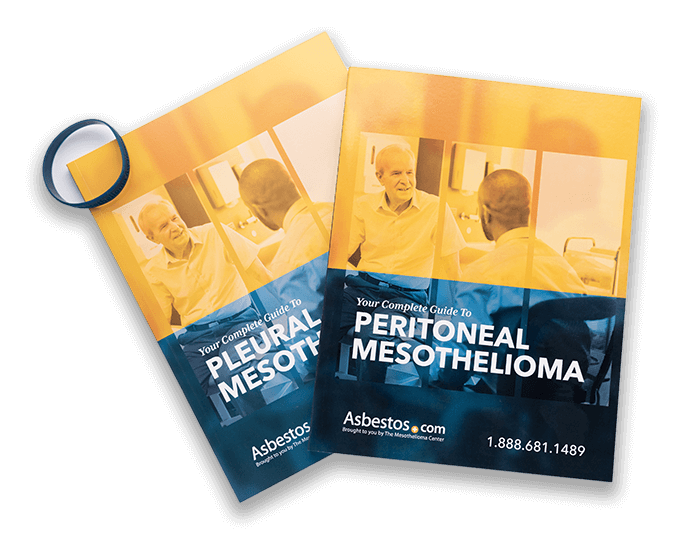The River of Chrysotile: Asbestos in the Sumas in Washington
Awareness & ResearchWritten by Daniel King | Edited By Walter Pacheco

Swift Creek flows down Sumas Mountain and feeds the Sumas River in Whatcom County, Washington, near the Canadian border.
An active landslide is eroding a natural asbestos deposit in the mountain, sending the toxic mineral through Swift Creek and far downstream.
The creek carries the most common type of asbestos — chrysotile.
Also known as white asbestos, chrysotile was once a common ingredient in construction materials and machine parts. Its cancer-causing effects became public knowledge in the late 1960s.
Though it is used much less in manufacturing now, asbestos can still be found abundantly in natural land formations.
Asbestos fibers are lighter than most of the other minerals that make up Swift Creek’s sediment. While sand and gravel settle along the creek bed quickly, chrysotile stays suspended in the water for a long time. This allows it to travel for miles along the Sumas and eventually across the border into Canada.
For more than a decade, local residents have grappled with the risks that come with the white mud of their river.
Naturally Occurring Asbestos in Swift Creek
The landslide on Sumas Mountain has been active since the 1930s, but it wasn’t until 2006 that health officials realized there was asbestos in the creek sediment.
Every year, local governments dredge the creek to prevent flooding during the wet season. The dredge spoils — made of crumbled rocks and sediment from the creek bed — used to be left in piles beside the creek.
The banks of Swift Creek are a popular area for horseback riding and dirt biking, and locals often hauled the dredge spoils away to fill in their yards and driveways.
But since officials discovered the dredge spoils contain up to 4 percent asbestos, they have been buried at a local landfill. Dredging workers must wear proper safety gear in accordance with asbestos-disposal regulations.
2009 Sumas River Flood Contamination
At first, most locals shrugged off the traces of naturally occurring asbestos in Swift Creek. But then unusually wet weather in January 2009 brought the risks of asbestos exposure right to their doorsteps.
Flood water flowed into the yards and basements of people living all along the Sumas River. When the water receded, residents found their land caked with white-colored mud.
Unfortunately, officials from the Environmental Protection Agency did not come to analyze the sediment until months later. By that time, residents had already cleaned up their properties as best they could.
Laboratory tests revealed many of the locals had been handling soil that was up to 27 percent asbestos.
Working with loose asbestos fibers at that concentration is like working with the asbestos insulation products that were popular in the 1950s.
Asbestos is most dangerous when it gets into the air as dust. Microscopic asbestos fibers have no scent and cause no immediate symptoms when you inhale them.
But when they accumulate in your lungs, it increases your risk of developing deadly diseases much later in life.
Asbestos is the primary cause in about 6,000 American cases of lung cancer each year. Mesothelioma, a rare cancer caused almost exclusively from asbestos exposure, kills about 2,500 Americans each year.
People living near the Sumas River took the news of the asbestos contamination in a variety of ways.
Some residents brushed it off, insisting asbestos is not dangerous once it is buried beneath a layer of clean soil. Others left the area completely, even when it meant surrendering their homes to foreclosure.
Local officials have had to walk a fine line: They want residents to take the risks seriously, but they do not want land values to fall any more than they already have. The asbestos contamination has diminished economic development in the region.
Exposure Risks in Both Wet and Dry Weather
While flood waters can bring asbestos onto people’s properties, periods of drought can help that asbestos go airborne by drying the land out.
Whatcom County officials post advisories about asbestos when there is low water flow in Swift Creek and the Sumas River.
Dusty conditions raise the risk of asbestos exposure for farm workers in areas that have been flooded. Some locals have also been known to take off-road vehicles into the Swift Creek bed when it dries out, kicking up asbestos-laden dirt in the process.
So far, health officials have not noted an elevated rate of lung diseases in Whatcom County.
In 2016, however, the U.S. Geological Survey released a study confirming that sediment carried by the Sumas River can be up to 37 percent asbestos.
Since asbestos-related diseases can take between 20 and 50 years to develop, time will tell just how dangerous the river of chrysotile is for residents of Whatcom County.




